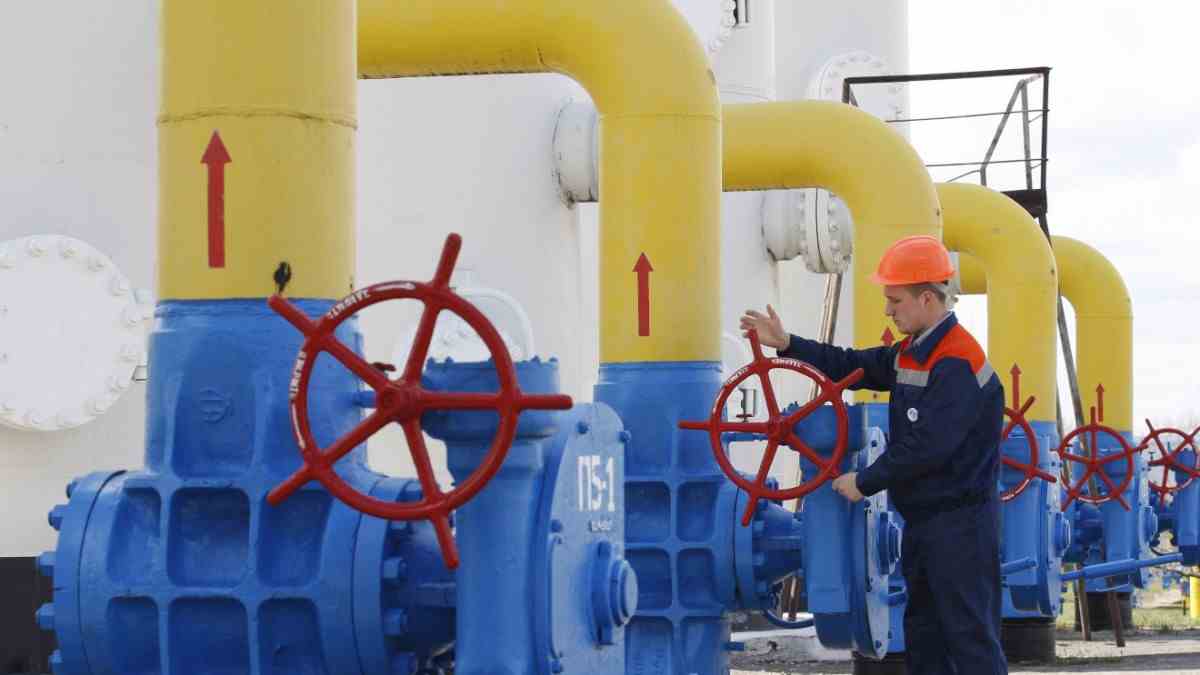Presumably nobody would be interested in the small Ukrainian town of Novopskov if the construction crews hadn’t arrived there in the mid-1970s. Together, the socialist sister states laid the Soyuz (“Union”) gas pipeline directly past Novopskov. And as of this Wednesday, the small town on the Russian border is where the Soyuz ends, at least for now. The compressor station there, which transports the gas to the west at new pressure, stopped working at five to seven on Wednesday morning. The pipeline is empty.
The Ukrainian network operator GTSOU justified this with “force majeure”. Because Novopskov is in the Luhansk region, and that is occupied by Russian troops. GTSOU reports that it is no longer possible to control the compressor station. On top of that, the occupying forces used the gas that was passed through without permission, which impaired the stability of the network. The Russian occupiers use it to operate power plants, among other things, reports the Ukrainian gas company Naftogaz, damage: around one billion euros a month. Force majeure, so-called force majeure, makes it easier to touch on existing contracts. The allegations cannot be verified independently.
However, what does not flow via Nowopskow does not arrive in Waidhaus in Bavaria, one of the most important entry points into the German grid. According to the Federal Network Agency’s current management report, the gas flows there have fallen by a quarter. The Bonn authority announced that the missing quantities could have been compensated for by deliveries from Norway and the Netherlands. “The gas supply in Germany is stable.” The prices have not increased either. The Baltic Sea pipeline Nord Stream 1, the other important connection from Russia, is still delivering at the upper limit.
Imminent bottlenecks? That depends on Moscow
But there are other lines. In addition to the comparatively old Soyuz pipeline, there is another pipeline system in the Ukraine, which essentially includes the Progress and UPU pipelines. 77 million cubic meters of gas feed-in are contractually agreed here every day. However, more than three times as much is technically possible, according to the Ukrainian network operator GTSOU. The gas can therefore be temporarily diverted to the larger system. Not at Novopskov, but at a place called Suja it would cross the border to Ukraine.
Even experts therefore do not necessarily expect bottlenecks in gas. The Ukrainian network has not been operating at its capacity limit for a long time, says Andreas Goldthau, pipeline expert at the University of Erfurt. “Ironically, transit through Ukraine has increased recently, despite the war.” This is also paid well by Russia. In previous situations, the gas transit from the Soyuz pipeline could be moved to the other part of the “Brotherhood” system. “There is still enough buffer in the Ukrainian system,” says Goldthau.
The decision, however, lies with Russia: Gazprom would have to route the gas for its western customers to Suja, to the other pipeline. And here begins a bizarre war in the midst of war. The Russian gas monopoly Gazprom considers a diversion via Sudscha to be “technologically impossible”. Also the reference to “force majeure” could not be understood.
The Ukrainian side, in turn, refers to the existing contracts. They stipulate that Gazprom must be informed in good time and alternative routes must be offered if a pipeline fails, says Sergej Makogon, the head of the gas network operator. You have done that. “Unfortunately, Gazprom did not respond.” What’s more, Gazprom ultimately turned off the tap, not Ukraine. So far there have been no larger bookings via the alternative route.
The question is who is in breach of contract with whom. From Kiev’s point of view, that’s Gazprom – in relation to its customers in Europe. “Gazprom cannot back out of its commitments,” says Yuri Vitrenko, head of the Naftogaz group. Finally, an alternative route for the transit was offered, even at the same price. If, on the other hand, Gazprom were to cut its pipeline payments, they would find themselves before an arbitral tribunal again – in the middle of a war. The end is open.
German gas storage tanks are filling up
In the meantime, however, the gas storage facilities in Germany are filling up, also as a precaution against a supply interruption. They were almost 39 percent full on Wednesday. Hardly any gas is currently used for heating, so more is used for storage. If the current rate is maintained, they will be half full by the beginning of June.

